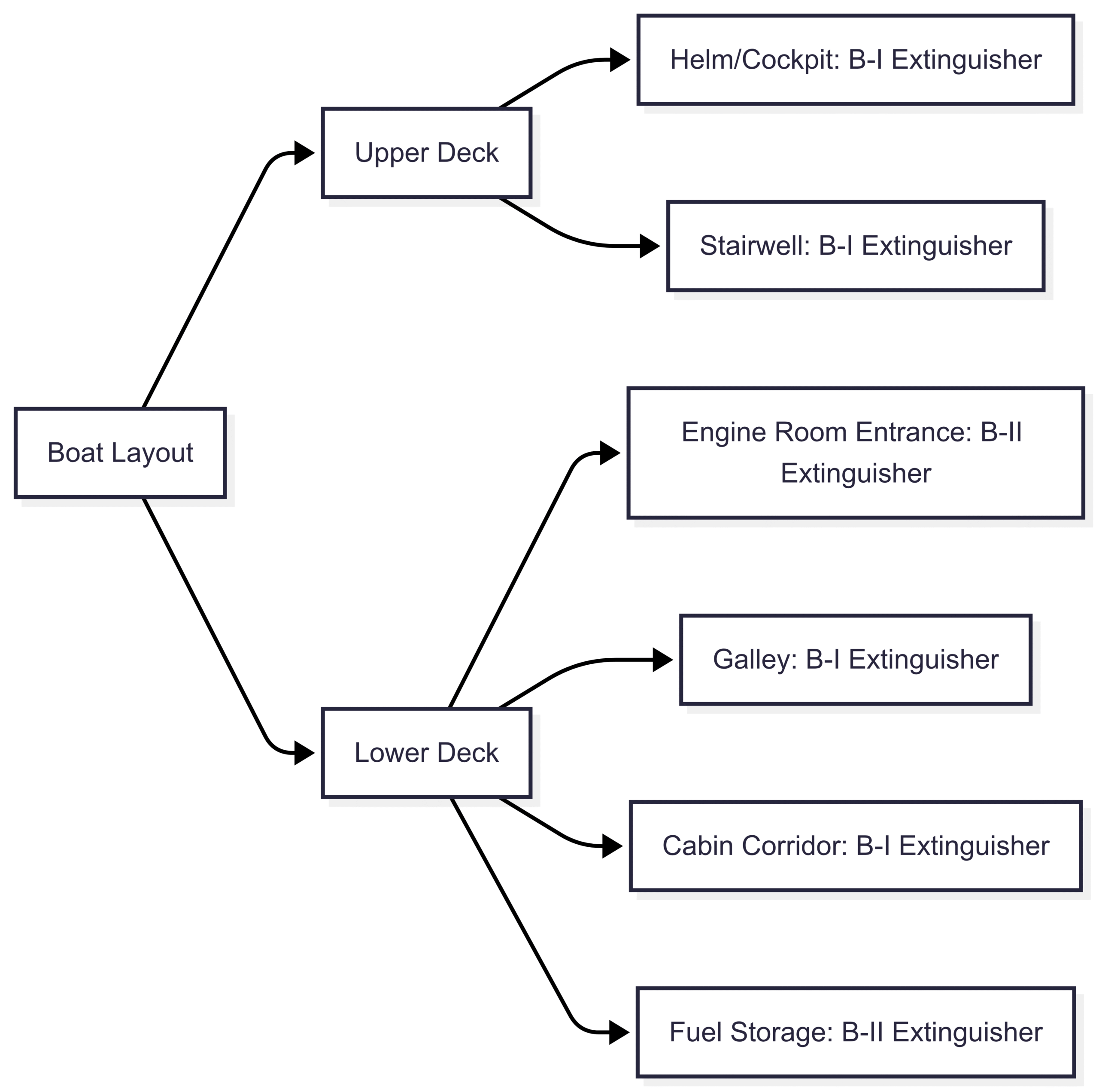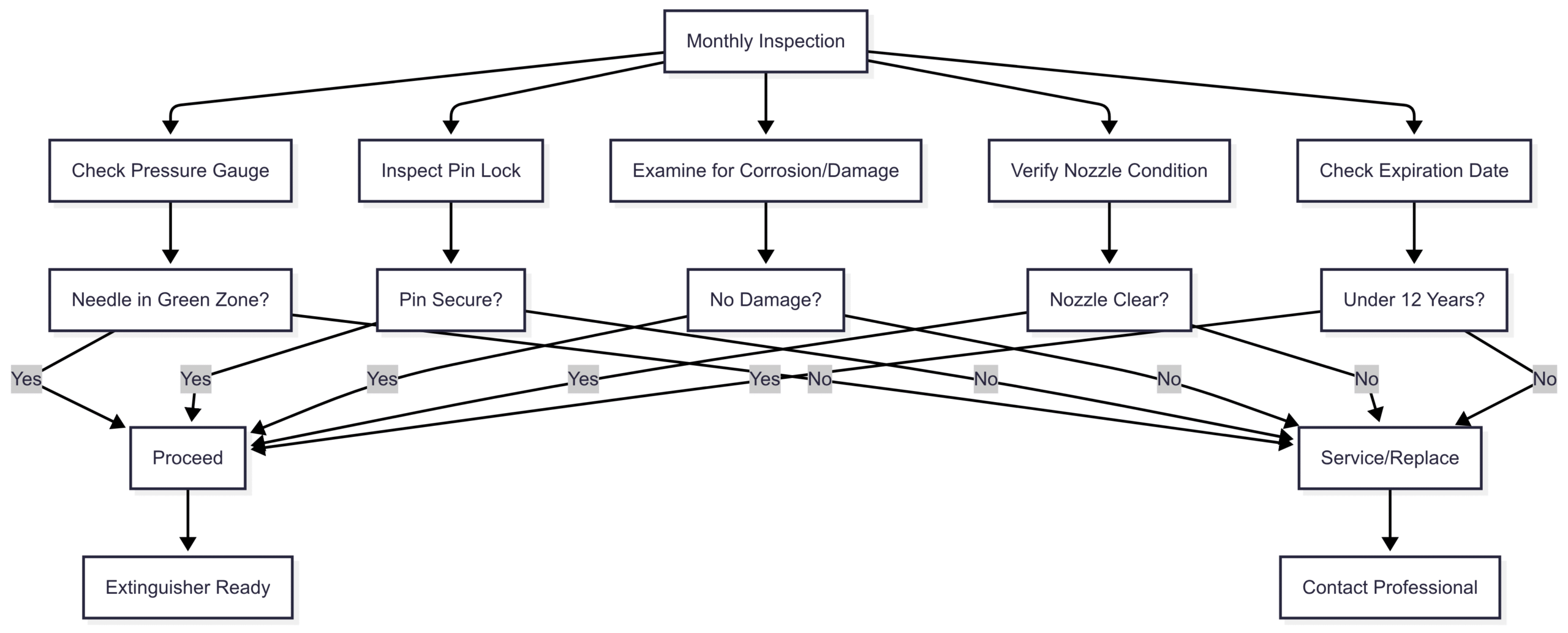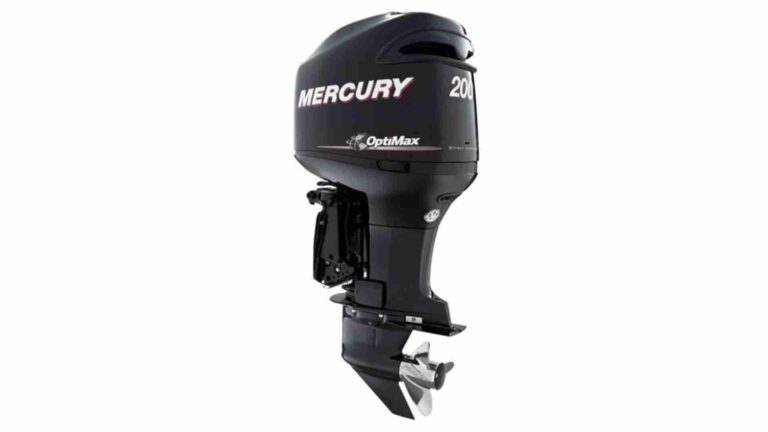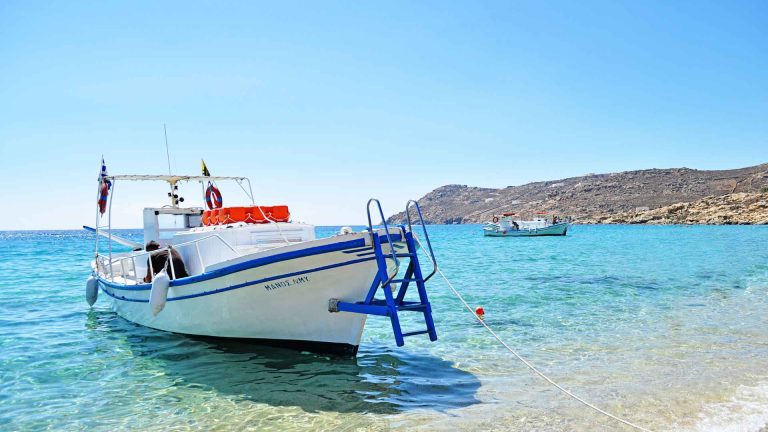Where Should Fire Extinguishers be Stored on a Boat?
Learn optimal fire extinguisher storage on boats for safety. Discover key locations, types, and USCG regulations.
Boating offers an unparalleled sense of freedom, whether you’re cruising on a serene lake or navigating the open sea. However, the confined environment of a boat, combined with flammable materials like fuel and electrical systems, makes fire safety a critical concern. A fire on a boat can escalate rapidly, endangering lives and property. Properly placed fire extinguishers are a vital line of defense, enabling quick action to contain or extinguish fires before they become catastrophic. This comprehensive guide explores the best locations for storing fire extinguishers on a boat, the types required, United States Coast Guard (USCG) regulations, and practical tips for maintenance and use, ensuring you’re well-prepared for emergencies.
Why Fire Extinguishers Are Essential on Boats
Boats are uniquely vulnerable to fire hazards due to their compact spaces and the presence of flammable materials. Fuel, electrical wiring, and cooking appliances in galleys create high-risk environments. A small spark or overheating component can quickly ignite a fire, and without immediate intervention, the consequences can be devastating—ranging from vessel damage to loss of life. According to USCG statistics, while fire-related boating accidents are relatively rare (47 out of 5,265 reported incidents in 2020), their potential severity demands preparedness.
Fire extinguishers are not just safety equipment; they are a legal requirement for most boats. The USCG mandates that vessels meeting certain criteria—such as those with inboard engines, closed compartments, or permanently installed fuel tanks—must carry approved fire extinguishers. Beyond compliance, having extinguishers in strategic locations ensures you can respond swiftly to a fire, potentially saving your boat and the lives of those on board.
USCG Regulations for Fire Extinguishers on Boats
The USCG sets clear guidelines for fire extinguisher requirements based on a boat’s size, construction, and equipment. These regulations ensure that vessels are equipped to handle fire emergencies effectively. Below is a summary of the key requirements:
Minimum Fire Extinguisher Requirements
The number and type of fire extinguishers depend on the vessel’s length:
| Vessel Length | Minimum Fire Extinguisher Requirement |
|---|---|
| Under 26 feet | At least one B-I extinguisher |
| 26 to under 40 feet | Two B-I extinguishers or one B-II extinguisher |
| 40 to 65 feet | Three B-I extinguishers or one B-I and one B-II extinguisher |
| Over 65 feet | Check federal regulations for specific requirements |
Extinguisher Types
- B-I and B-II Extinguishers: These are Class B fire extinguishers designed for fires involving flammable liquids and gases, such as gasoline or propane, common on boats. B-II extinguishers are larger and have greater capacity than B-I.
- 5-B and 20-B Extinguishers: For boats model year 2018 and newer, the USCG requires 5-B or 20-B rated extinguishers. For older boats (1953–2017), B-I or B-II extinguishers in good condition are also acceptable.
- Expiration: Disposable fire extinguishers older than 12 years must be replaced, per USCG regulations.
Vessel Conditions Requiring Fire Extinguishers
Fire extinguishers are mandatory for boats with:
- Closed engine compartments containing fuel tanks.
- Double bottoms not sealed to the hull or filled with flotation materials.
- Closed living spaces or compartments.
- Permanently installed fuel tanks.
- Inboard engines.
Condition and Maintenance
USCG regulations stipulate that fire extinguishers must be:
- Charged and indicate proper pressure (if equipped with a gauge).
- Equipped with a secure pin lock.
- Free of significant corrosion or damage.
- Fitted with a clean, unobstructed discharge nozzle.
Failure to comply with these regulations can result in fines and, more critically, leave you unprepared for an emergency. Regular maintenance checks are essential to ensure extinguishers remain in good working order.
Optimal Storage Locations for Fire Extinguishers
The key to effective fire extinguisher placement is accessibility, visibility, and proximity to high-risk areas without being too close to potential fire sources. Below are the recommended locations for storing fire extinguishers on a boat, tailored to different areas of the vessel.
1. Near the Helm or Cockpit
The helm or cockpit is the boat’s command center, where the captain spends significant time. Placing a fire extinguisher here ensures immediate access during an emergency. Key considerations:
- Mounting: Secure the extinguisher in a bracket within arm’s reach of the helm but away from obstructions like seats or equipment.
- Visibility: Ensure it’s clearly visible, ideally in an open area of the cockpit.
- Protection: Use weather-resistant brackets to protect the extinguisher from saltwater exposure or rough conditions.
Example Placement: Mount a B-I extinguisher on a bulkhead near the steering wheel, ensuring it’s easily reachable without impeding navigation.
2. In the Galley
The galley, or kitchen area, is a hotspot for fire risks due to cooking appliances like stoves or microwaves. A fire extinguisher here is critical but must be placed strategically:
- Positioning: Install the extinguisher near the galley entrance or a high-traffic area, not directly next to the stove or heat sources. This ensures accessibility even if a fire starts at the cooking station.
- Type: A B-I extinguisher is typically sufficient for smaller galleys, while larger vessels may require a B-II.
- Visibility: Mount it in a visible spot, such as on a wall near the galley counter, avoiding cabinets or cluttered areas.
Example Placement: A B-I extinguisher mounted on the wall near the galley door, easily reachable but safe from direct exposure to flames.
3. Engine Room or Near the Engine Compartment
Engine rooms are high-risk areas due to fuel, oil, and electrical components. Fires here can spread rapidly, making extinguisher placement critical:
- Location: Place the extinguisher near the engine room entrance or close to the engine compartment, ensuring it’s accessible without entering a fire zone.
- Automatic Systems: For larger boats, consider installing an automatic fire suppression system in the engine room, supplemented by a handheld B-II extinguisher nearby.
- Mounting: Use heavy-duty brackets to secure the extinguisher against vibrations and rough seas.
Example Placement: A B-II extinguisher mounted just outside the engine room door, allowing quick access without exposure to flames or heat.
4. Cabin Entrances
For boats with cabins or sleeping quarters, fire extinguishers should be placed at or near cabin entrances to ensure accessibility for all passengers:
- Accessibility: Mount extinguishers in hallways or near doorways, ensuring they’re reachable from multiple cabins.
- Visibility: Avoid hidden spots like inside closets or under bunks. Use clear signage if necessary.
- Type: A B-I extinguisher is usually sufficient for cabin areas unless the vessel is large with multiple compartments.
Example Placement: A B-I extinguisher mounted in a corridor leading to sleeping quarters, visible and accessible to all passengers.
5. Near Fuel Storage Areas
Fuel storage areas, whether for gasoline or diesel, pose significant fire risks. An extinguisher nearby is essential:
- Positioning: Place the extinguisher close to but not directly adjacent to fuel tanks, ensuring it remains accessible if a fire starts.
- Type: A B-II extinguisher is recommended for larger fuel storage areas due to its higher capacity.
- Mounting: Secure it in a bracket to prevent movement during rough conditions.
Example Placement: A B-II extinguisher mounted on a bulkhead near the fuel storage compartment, easily reachable but safe from direct fire exposure.
6. Multiple Decks
For boats with multiple decks, distribute fire extinguishers across each level to ensure comprehensive coverage:
- Distribution: Place at least one extinguisher per deck, focusing on high-traffic or high-risk areas like stairwells or deck entrances.
- Consistency: Use uniform mounting brackets and ensure extinguishers are clearly marked for quick identification.
- Type: B-I extinguishers are typically sufficient for upper decks, while lower decks with engine or fuel areas may require B-II.
Example Placement: A B-I extinguisher on the upper deck near the main stairwell and a B-II extinguisher on the lower deck near the engine room.
Chart: Fire Extinguisher Placement on a Multi-Deck Boat

This chart illustrates a typical multi-deck boat layout with recommended extinguisher placements, ensuring coverage across key areas.
Choosing the Right Fire Extinguisher
Selecting the appropriate fire extinguisher is as important as its placement. Class B extinguishers are designed for flammable liquid and gas fires, making them ideal for marine environments. Below is a comparison of B-I and B-II extinguishers, including specifications and approximate prices.
Fire Extinguisher Specifications and Prices
| Extinguisher Type | Capacity | Weight | Discharge Time | Range | Approximate Price (USD) |
|---|---|---|---|---|---|
| B-I | 1.25–2 lbs | 2–4 lbs | 8–10 seconds | 6–10 ft | $20–$40 |
| B-II | 2.5–5 lbs | 5–10 lbs | 10–15 seconds | 10–15 ft | $40–$80 |
Extinguishing Agents
- Dry Chemical (Ammonium Phosphate): Effective for Class B fires, commonly used in B-I and B-II extinguishers.
- Carbon Dioxide (CO2): Suitable for electrical and flammable liquid fires, often used in larger vessels.
- Halogenated Agents: Environmentally friendly alternatives, though less common due to higher cost.
Recommendations
- Small Boats (Under 26 feet): A single B-I extinguisher is typically sufficient, placed near the helm or galley.
- Medium Boats (26–40 feet): Use two B-I extinguishers or one B-II, distributed across the helm, galley, and engine areas.
- Large Boats (40–65 feet): Combine B-I and B-II extinguishers, prioritizing engine rooms and fuel storage areas.
- Automatic Suppression Systems: For engine rooms on larger vessels, consider systems like the Fireboy-Xintex Clean Agent System ($500–$1,500), which activates automatically at high temperatures.
When purchasing, opt for USCG-approved extinguishers from reputable brands like Kidde, Amerex, or First Alert. Check for certification labels and ensure the extinguisher meets 5-B or 20-B standards for newer boats.
Fire Extinguisher Storage and Maintenance Tips
Proper storage and maintenance are critical to ensuring fire extinguishers function when needed. Follow these guidelines to keep your extinguishers in top condition:
Storage Guidelines
- Secure Mounting: Use USCG-approved wall brackets or cabinets to prevent extinguishers from shifting during rough seas. For extinguishers under 40 lbs, mount no higher than 5 feet from the floor; for those over 40 lbs, mount no higher than 3.5 feet.
- Orientation: Modern pressurized extinguishers can be stored horizontally or upright. For older, non-pressurized models, store upright to prevent settling of extinguishing agents.
- Visibility: Ensure extinguishers are not hidden behind furniture, equipment, or clutter. Use clear signage if necessary.
- Protection: In exposed areas like the cockpit, use weather-resistant covers or brackets to protect against corrosion.
Maintenance Checklist
Perform monthly inspections to verify:
- Pressure: Check the pressure gauge needle is in the green zone (if applicable).
- Pin Lock: Ensure the pin is securely in place.
- Condition: Look for signs of corrosion, dents, or damage.
- Nozzle: Confirm the discharge nozzle is clean and free of obstructions.
- Expiration: Replace disposable extinguishers older than 12 years.
Annual professional servicing by a certified technician is recommended for rechargeable extinguishers. Refer to the extinguisher’s label for specific maintenance instructions.
Chart: Fire Extinguisher Maintenance Process

This chart outlines the steps for monthly fire extinguisher checks, ensuring they remain in serviceable condition.
How to Use a Fire Extinguisher
Knowing how to use a fire extinguisher is as crucial as its placement. The PASS technique is a simple, effective method:
- Pull: Pull the pin to unlock the extinguisher.
- Aim: Aim the nozzle at the base of the fire from a safe distance (6–15 feet, depending on the extinguisher).
- Squeeze: Squeeze the handle to release the extinguishing agent.
- Sweep: Sweep the nozzle side to side to cover the fire until it’s extinguished.
Training and Drills
- Educate Passengers: Ensure all passengers know the locations of extinguishers and how to use them. Conduct safety drills to familiarize everyone with the PASS technique.
- PWC Considerations: For personal watercraft (PWC), extinguishers may be stored in less accessible compartments. In a fire, PWC operators should swim away and use another vessel’s extinguisher rather than opening the engine compartment.
Additional Safety Tips
- Keep Bilges Clean: Remove trash and debris from bilges to reduce fire risks.
- Fire Prevention: Regularly inspect fuel lines, electrical systems, and cooking appliances for potential hazards.
- Emergency Preparedness: Develop a fire response plan, including evacuation routes and communication protocols.
- Signage: Use clear, reflective signs to mark extinguisher locations, especially in low-visibility conditions.
Is Your Boat Properly Equipped?
Proper fire extinguisher storage is a cornerstone of boating safety. By placing USCG-approved B-I or B-II extinguishers in high-risk areas like the helm, galley, engine room, cabin entrances, and fuel storage areas, you ensure quick access during emergencies. Regular maintenance, proper mounting, and passenger training further enhance safety. Whether you’re a weekend boater or a seasoned mariner, equipping your vessel with the right extinguishers and knowing how to use them can make the difference between a minor incident and a tragedy.
For those ready to purchase, consult a local marine safety equipment dealer or visit reputable online retailers like West Marine or Defender. Ensure your extinguishers meet USCG standards and are tailored to your boat’s size and layout. Safe boating starts with preparation—equip your vessel, train your crew, and enjoy the water with peace of mind.
Share Where Should Fire Extinguishers be Stored on a Boat? with your friends and Leave a comment below with your thoughts.
Read What Are Boats Made Of: All Materials Explained Guide until we meet in the next article.






